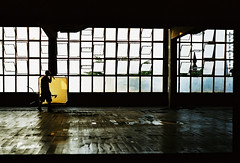 OK, the holidays are over, the relatives have returned home, but the kids are still out of school. What to do when everyone is climbing the walls - how about a trip to the zoo?
OK, the holidays are over, the relatives have returned home, but the kids are still out of school. What to do when everyone is climbing the walls - how about a trip to the zoo?My boys and I went to the Woodland Park Zoo in Seattle yesterday and had a great time seeing all the animals. We went in search of red pandas, armadillos, snakes, and penguins. Along the way, we also enjoyed the porcupines, flamingos, elephants, night monkeys, and the fat-tailed gecko that we got to touch! The best part is that the zoos are relatively empty this time of year so you get a front-row view of all the animals.
We learned a few interesting facts too... Fat-tailed geckos (who looked two-headed to us since their tail looks a lot like their head) can drop their tails if they are under attack and the tail will grow back. Flamingos sleep on one leg to keep the other one warm (I thought they were just showing off their amazing balance on those teeny, tiny legs). We also learned there is only one armadillo that can roll completely into a ball to defend itself. That just so happened to be the Three-Banded Armadillo that we were looking for in the Night Exhibit, but we're fairly certain that tan-colored ball on the ground was him.
Our zoo is open 364 days a year - and I would imagine most others are as well since the animals and their keepers are always there so don't miss out on a chance to miss the crowds and get up close with the animals and their keepers.











